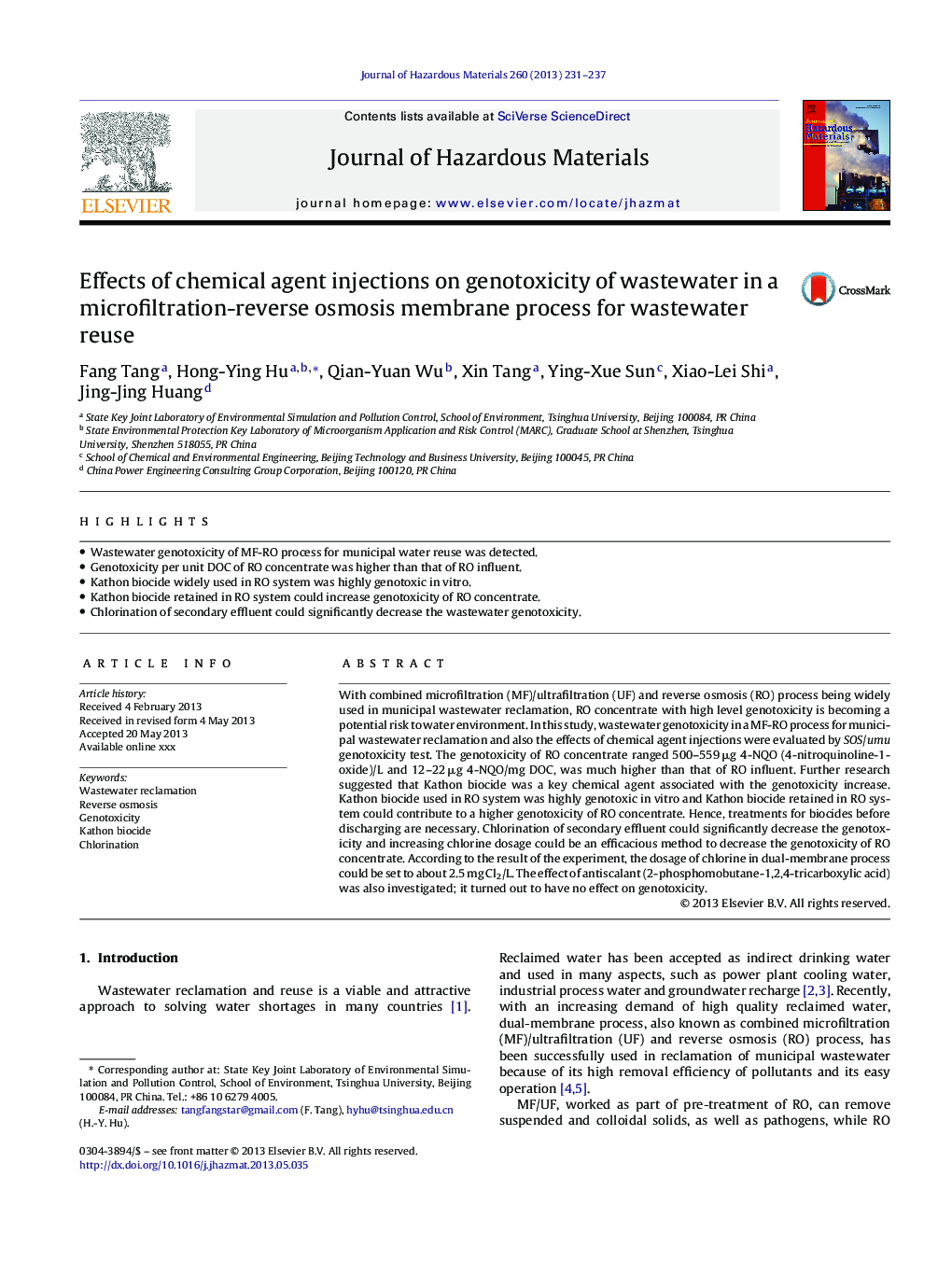| Article ID | Journal | Published Year | Pages | File Type |
|---|---|---|---|---|
| 6972366 | Journal of Hazardous Materials | 2013 | 7 Pages |
Abstract
With combined microfiltration (MF)/ultrafiltration (UF) and reverse osmosis (RO) process being widely used in municipal wastewater reclamation, RO concentrate with high level genotoxicity is becoming a potential risk to water environment. In this study, wastewater genotoxicity in a MF-RO process for municipal wastewater reclamation and also the effects of chemical agent injections were evaluated by SOS/umu genotoxicity test. The genotoxicity of RO concentrate ranged 500-559 μg 4-NQO (4-nitroquinoline-1-oxide)/L and 12-22 μg 4-NQO/mg DOC, was much higher than that of RO influent. Further research suggested that Kathon biocide was a key chemical agent associated with the genotoxicity increase. Kathon biocide used in RO system was highly genotoxic in vitro and Kathon biocide retained in RO system could contribute to a higher genotoxicity of RO concentrate. Hence, treatments for biocides before discharging are necessary. Chlorination of secondary effluent could significantly decrease the genotoxicity and increasing chlorine dosage could be an efficacious method to decrease the genotoxicity of RO concentrate. According to the result of the experiment, the dosage of chlorine in dual-membrane process could be set to about 2.5 mg Cl2/L. The effect of antiscalant (2-phosphomobutane-1,2,4-tricarboxylic acid) was also investigated; it turned out to have no effect on genotoxicity.
Related Topics
Physical Sciences and Engineering
Chemical Engineering
Chemical Health and Safety
Authors
Fang Tang, Hong-Ying Hu, Qian-Yuan Wu, Xin Tang, Ying-Xue Sun, Xiao-Lei Shi, Jing-Jing Huang,
